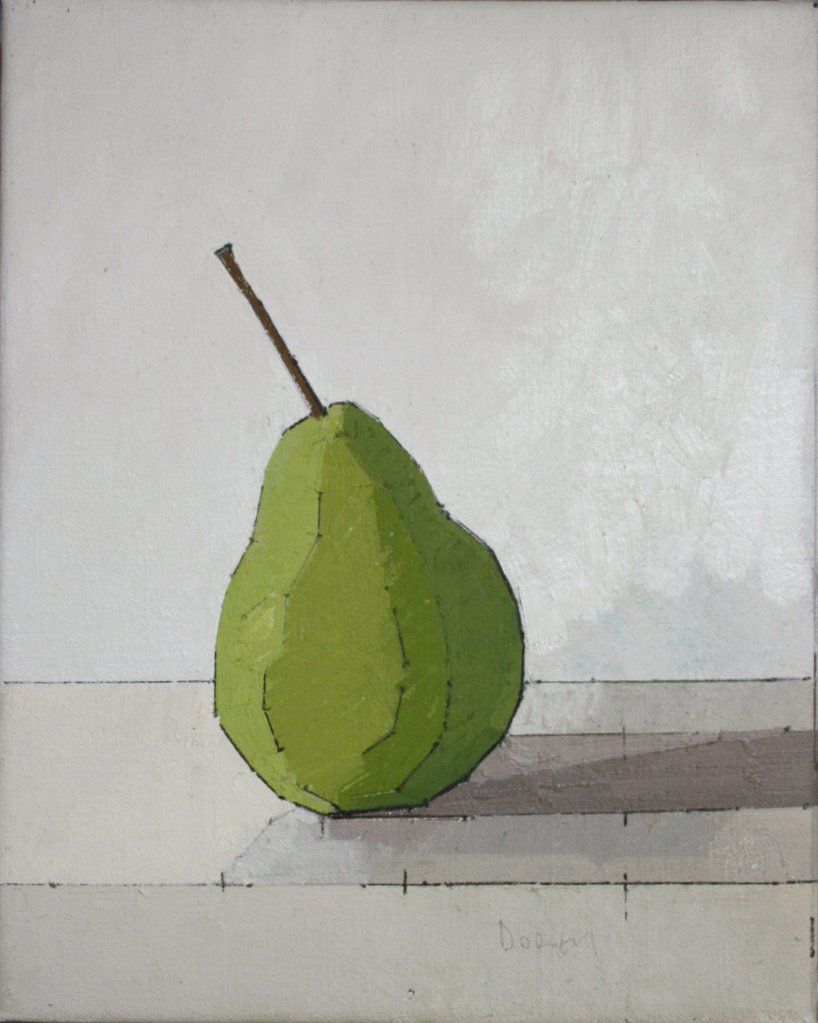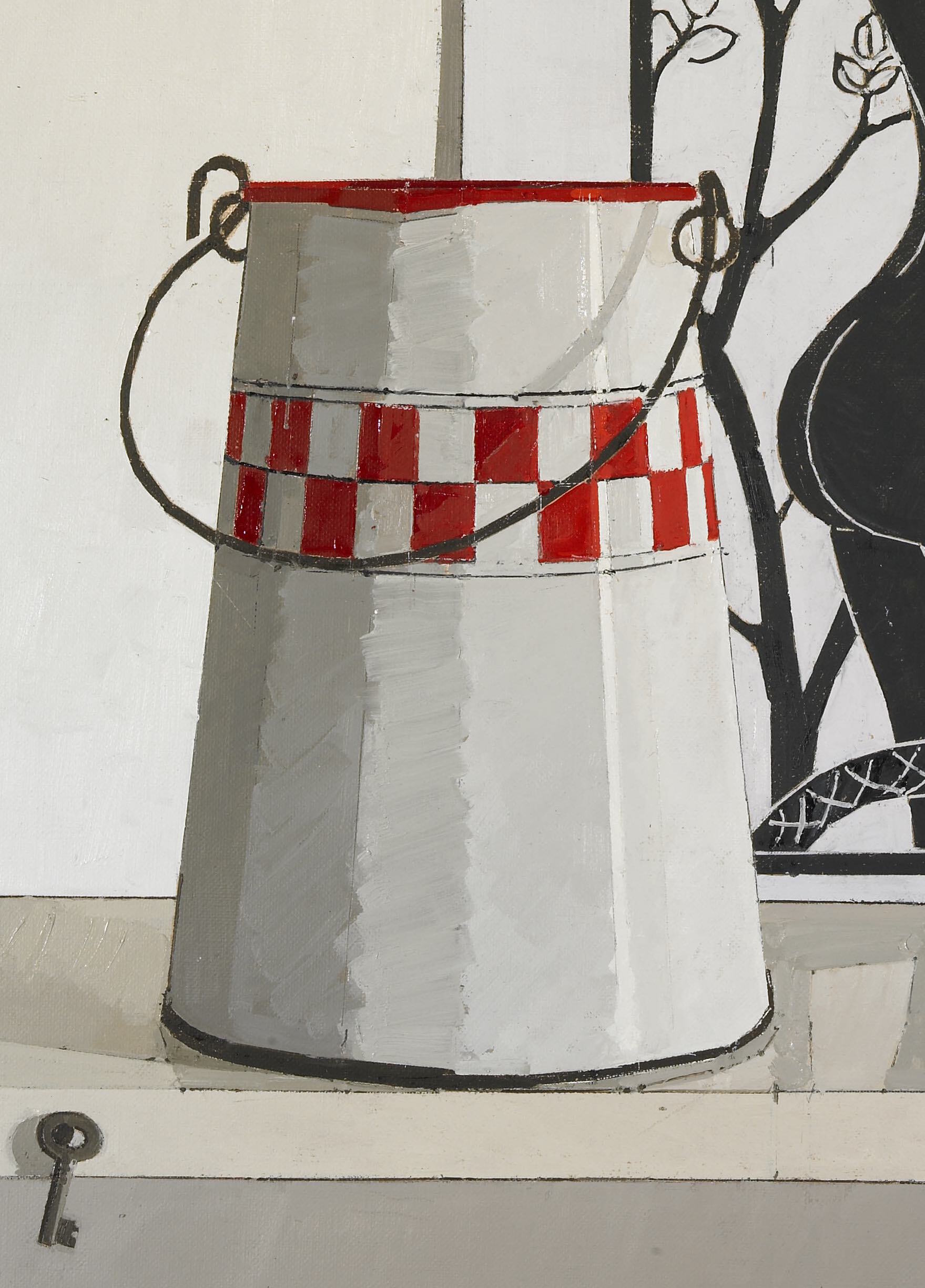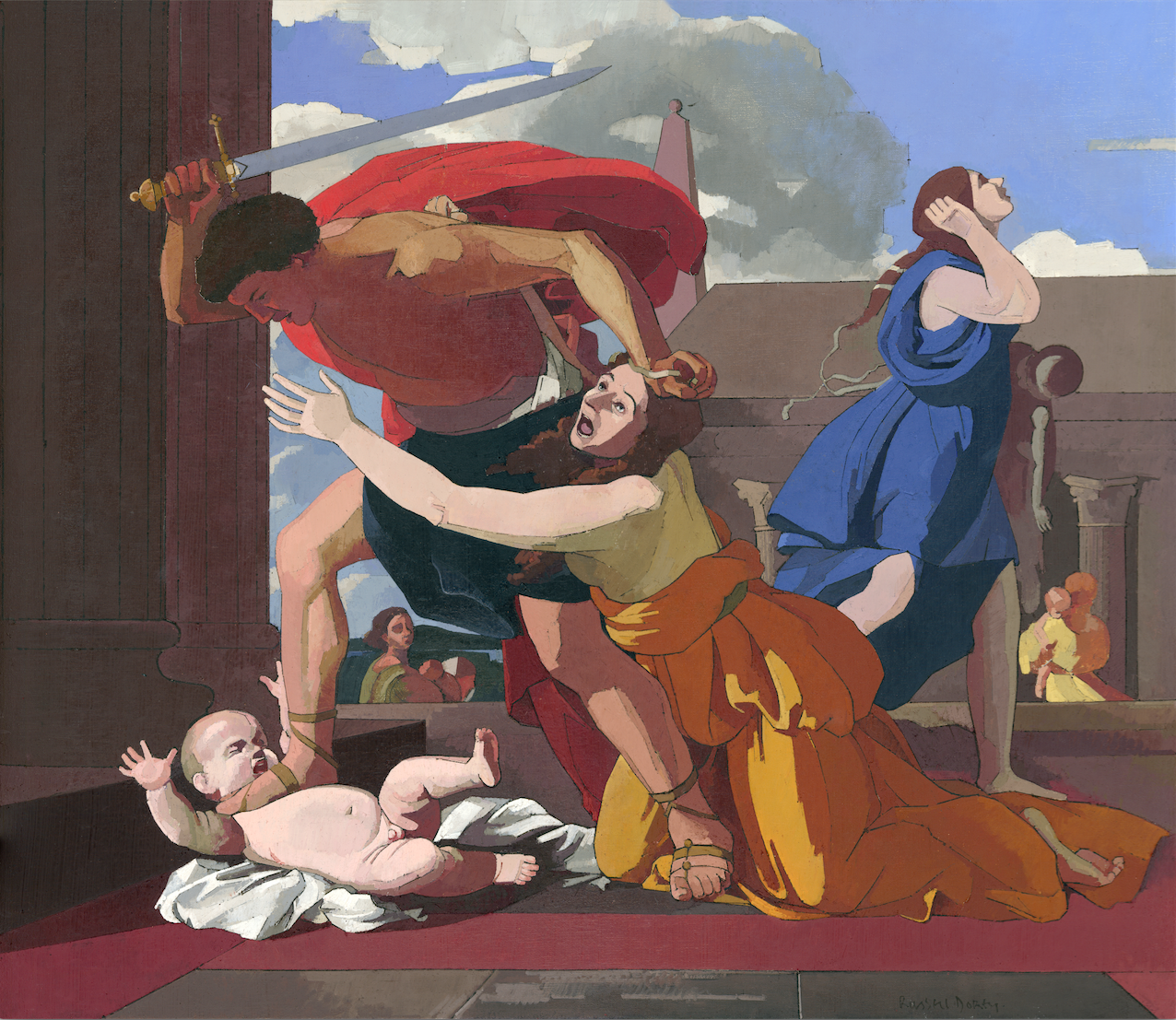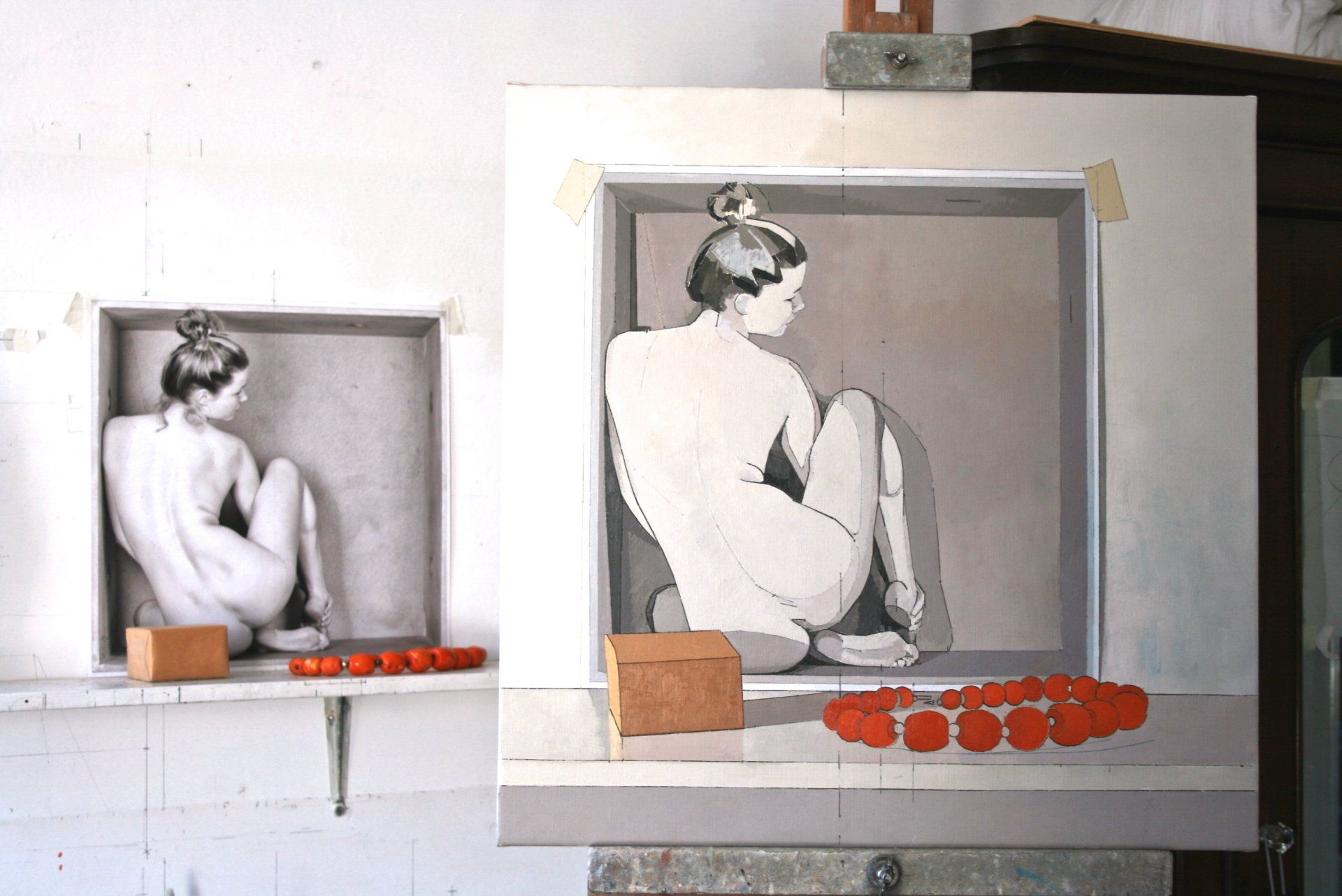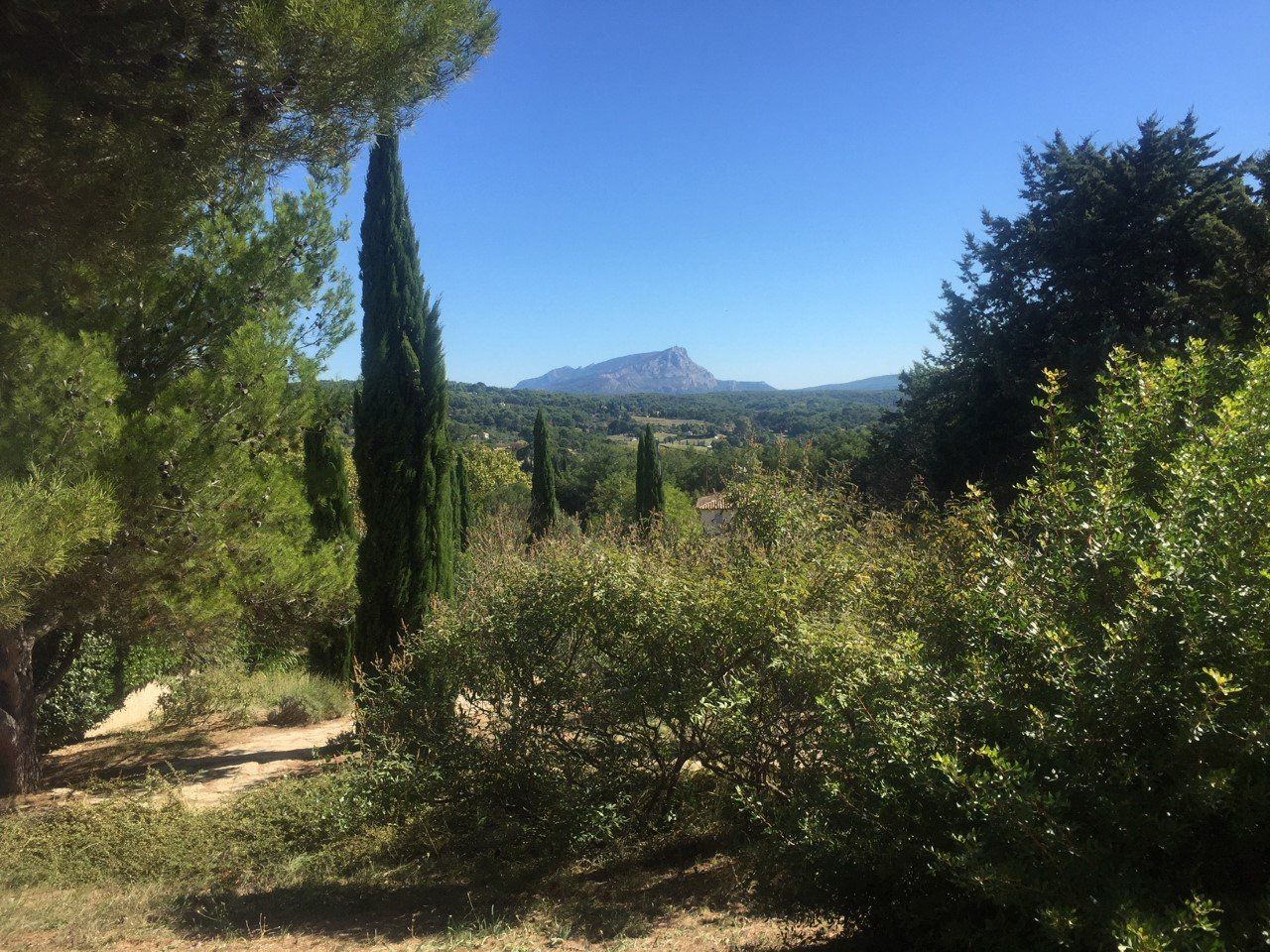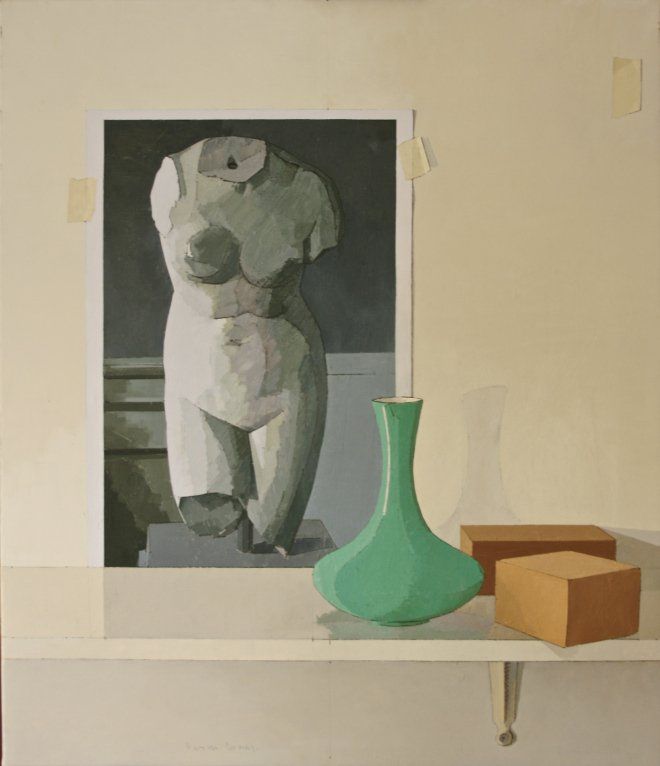L’ATELIER LES LAUVES
Ten minutes before Cezanne’s Studio reopened after lunch I was waiting on the road outside.
Cezanne had his studio built on the hill, LES LAUVES, north of the town in 1901. The studio was then the only building beside the track that is now a busy road with houses and flats along it as Aix has grown.
He had a farmhouse, a Bastide, knocked down, kept the cellars, and built his studio upon them.
I visited the studio about 25 years ago and in the intervening quarter of a century I have changed more than it has, but I didn’t realize then quite how perfect a studio it is.
In 1955 or 56 there was a famous bitter winter referred to as Le grand hiver or le grand gelé. The cold killed most of the olive trees that carpeted Provence. In place of the olives there are now mostly Mediterranean pine that are much taller. Cezanne’s studio at les Lauves was originally surrounded by low olive trees. He would have looked out of his studio over the olives towards the town and nothing would have blocked the light from the north.
The courtyard is now shaded under pines (it’s the English Provencal fantasy and you half expect a hunchback Depardieu to greet you).
This time they let me in.
The studio is on the first floor and I walked up the stairs which Cezanne walked, trod on the same carrelage with my hand on the same wooden bannister rail and turned the doorknob to open the door to his studio as he would have done.
This must seem a bit over the top but it is the closest I’m going to get to meeting the man who made me a painter and who has been my guide and example since I was ninenteen years old.
His studio is almost eight meters square and five high. There is a very huge window on the north side and two windows on the southern side, which have shutters both on the outside and on the inside to stop any light penetrating. Northern light is even throughout the day but light from the south pours in through the windows bleaching out everything so you can’t see what you’re painting.
Cezanne mixed his own colour for the walls; black, white and a bit of ochre and red etc. He made a colour that would absorb rather than reflect light; the colour photographers use. He also had a wooden floor laid in the studio instead of the ubiquitous red carrelage tiled floors of southern France and this had the same deadening effect as the walls.
There’s a tall slot in the corner of the studio so he could bring in and take out his large late Baigneuses compositions.
I used to try to paint in a room with a rose coloured carpet and it was difficult, and I’ve never had a studio with northern light.
I bloody love that studio (and I should have taken more photographs).
